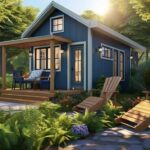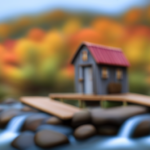Beginners Guides
Where To Park A Tiny House In Maryland
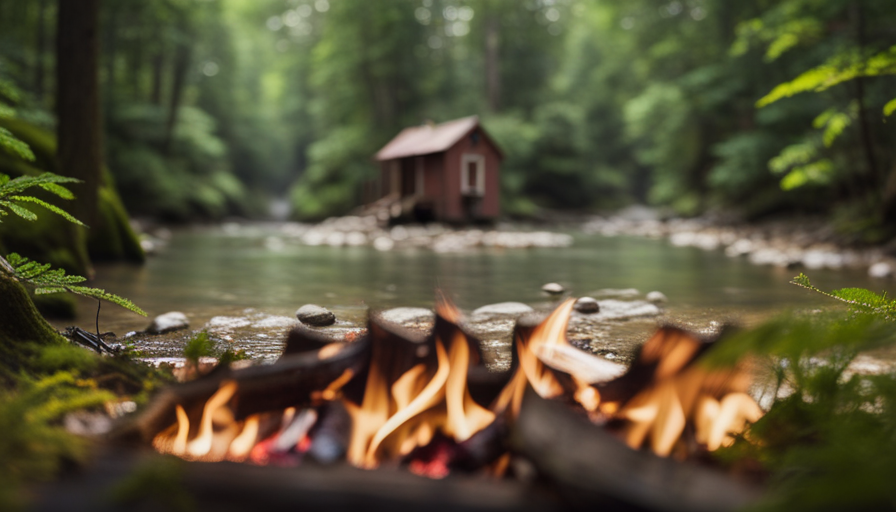
Discover the delightful state of Maryland, where searching for the ideal location to place your tiny home turns into an exciting journey loaded with limitless options. Maryland provides a variety of settings, from peaceful rural getaways to lively city environments, all ready to welcome your tiny living aspirations.
Picture yourself nestled in the serene countryside, surrounded by rolling hills and picturesque landscapes. Or perhaps you prefer the vibrant energy of urban living in Baltimore, where the city’s rich history and culture blend seamlessly with modern amenities.
If coastal living is your dream, look no further than Ocean City, where you can wake up to the soothing sounds of waves crashing on the shore. For a taste of history and charm, consider Annapolis, with its historic architecture and waterfront views.
And let’s not forget the quaint towns of Western Maryland, where a slower pace of life and scenic beauty await. Finally, if convenience is what you seek, Maryland’s suburban areas offer easy access to amenities and a sense of community.
No matter your preference, Maryland has the perfect spot to park your tiny house, allowing you to live your best life in this beautiful state. So pack your bags, embrace the freedom of tiny living, and discover the wonders that Maryland has to offer.
Key Takeaways
- Maryland offers a diverse range of landscapes for parking tiny houses, including serene countryside retreats, urban living in Baltimore, coastal paradise in Ocean City, historic city in Annapolis, quaint towns in Western Maryland, and suburban areas.
- Baltimore provides transportation options, cultural diversity, and job opportunities for those looking to park a tiny house in an urban setting.
- Annapolis is known for its well-preserved buildings, walking tours, and significant landmarks, making it an attractive option for tiny house parking.
- Western Maryland offers mountain getaways, rural farm communities, historic landmarks, and outdoor adventures, providing a variety of options for those seeking a unique tiny house parking location.
Serene Countryside Retreats
If you’re looking for a peaceful and picturesque getaway, you can’t go wrong with Maryland’s serene countryside retreats to park your tiny house! These rural hideaways offer a perfect escape from the hustle and bustle of everyday life.
Imagine waking up to scenic landscapes, surrounded by nature’s beauty, and breathing in the fresh countryside air. Maryland’s countryside is known for its rolling hills, charming farms, and tranquil lakes, making it an ideal destination for those seeking serenity.
Whether you prefer to hike through the woods, have a picnic by the river, or simply relax in the solitude, these serene countryside retreats have it all.
But if you’re craving a taste of city life, don’t worry, because Baltimore’s urban living is just a short drive away.
Urban Living in Baltimore
Imagine living in the heart of Baltimore, where bustling streets, charming row houses, and vibrant city life surround you at every turn. The urban development in Baltimore offers a unique experience for those seeking an exciting and fast-paced lifestyle.
Three reasons why urban living in Baltimore is appealing:
-
Transportation options: The city boasts an extensive transportation network, including buses, subway, light rail, and even a free bus service called the Charm City Circulator. Getting around is a breeze, whether you’re commuting to work or exploring the city’s many attractions.
-
Cultural diversity: Baltimore is a melting pot of cultures, with a rich history and thriving arts scene. From world-class museums and galleries to lively festivals and events, there’s always something interesting to do or see.
-
Job opportunities: As a major economic hub, Baltimore offers a wide range of career opportunities. The city is home to numerous industries, including healthcare, education, technology, and government.
As you can see, urban living in Baltimore has its perks. However, if you prefer a more laid-back coastal lifestyle, let’s explore the option of coastal living in Ocean City.
Coastal Living in Ocean City
Living on the coast in Ocean City offers you the chance to experience the soothing sound of crashing waves as you bask in the sun and embrace the saying, "Life’s a beach."
This beachfront paradise provides the perfect setting for waterfront living. With miles of sandy beaches and stunning ocean views, Ocean City is a dream destination for those seeking a relaxed and picturesque lifestyle.
Whether you enjoy swimming, sunbathing, or strolling along the boardwalk, there is never a shortage of activities to indulge in. In addition to the natural beauty, Ocean City also offers a vibrant nightlife, with a variety of restaurants, bars, and entertainment options.
So, if you’re looking to live in a coastal paradise, Ocean City is the place to be.
Now, let’s explore the historic charm in Annapolis.
Historic Charm in Annapolis
Take a stroll through the charming streets of Annapolis and immerse yourself in its rich history and architectural beauty. Annapolis, the capital of Maryland, is a city that prides itself on its historic preservation efforts.
The city is home to many well-preserved buildings, some dating back to the 18th century. Walking tours are a popular way to explore the city and learn about its history. These tours take you through the narrow streets, past beautifully restored homes, and to significant landmarks like the Maryland State House and the United States Naval Academy.
As you walk, you can’t help but feel a sense of awe at the grandeur of the city’s past.
Now, let’s move on to explore the quaint towns in western Maryland.
Quaint Towns in Western Maryland
As you explore the picturesque towns nestled in the western part of Maryland, you’ll discover a captivating blend of quaint charm, local history, and natural beauty. Here are four things you won’t want to miss in this area:
-
Quaint Mountain Getaways: Escape the hustle and bustle of city life and indulge in the tranquil atmosphere of the mountains. Enjoy hiking trails, breathtaking views, and cozy cabins that offer the perfect retreat.
-
Rural Farm Communities: Immerse yourself in the simple pleasures of country living. Visit local farms, pick your own fruits and vegetables, and experience the warmth and hospitality of the locals.
-
Historic Landmarks: Take a step back in time as you explore the rich history of this region. From colonial architecture to Civil War sites, there is plenty to satisfy history buffs.
-
Outdoor Adventures: Embark on thrilling adventures in the great outdoors. Go fishing, kayaking, or biking along scenic trails, and soak in the natural beauty that surrounds you.
As you venture out of these quaint towns, you’ll find yourself in the convenient suburban areas of Maryland.
Convenient Suburban Areas
When you step into the surrounding suburban areas, you’ll find a comfortable and convenient lifestyle that offers a refreshing change of pace. Maryland is known for its vibrant cities and charming towns, but it also boasts some hidden gems in its suburban areas.
If you’re looking for a place to park your tiny house, you’ll be pleased to discover a variety of options in these convenient communities. One option is to explore the rural hideaways, where you can find peace and tranquility in the midst of nature. These areas offer a sense of seclusion while still being within reach of essential amenities. Imagine waking up to the sound of birds chirping and enjoying the serenity of your surroundings.
Another possibility is to consider waterfront communities. Maryland is blessed with numerous rivers, lakes, and even Chesapeake Bay, providing ample opportunities for waterfront living. Imagine having a stunning view right outside your doorstep, where you can relax and unwind after a long day.
Maryland’s suburban areas offer a comfortable and convenient lifestyle for those seeking a place to park their tiny house. Whether you prefer rural hideaways or waterfront communities, you’ll find the perfect spot to call home in the charming suburbs of Maryland.
Frequently Asked Questions
Are there any zoning restrictions for parking a tiny house in Maryland?
Yes, there are zoning restrictions for parking a tiny house in Maryland. These restrictions vary depending on the specific county and municipality. However, in general, tiny houses are typically not allowed to be parked in residential areas unless they meet certain criteria. For example, they may need to be on a permanent foundation or serve as an accessory dwelling unit on a property. Rural areas may offer more flexibility and options for parking a tiny house, but it’s important to check local regulations and obtain any necessary permits.
What are the average rental prices for parking a tiny house in Baltimore?
Average rental prices for parking a tiny house in Baltimore can vary depending on location and parking restrictions. It’s like navigating a maze, trying to find the perfect spot that fits your budget.
However, with a little perseverance, you can uncover hidden gems that offer affordable rates. Keep in mind that parking restrictions may limit your options, but with careful research and planning, you can find a suitable spot that won’t break the bank.
Are there any specific regulations for parking a tiny house in Ocean City?
There are specific regulations and parking restrictions for parking a tiny house in Ocean City. It’s important to familiarize yourself with these rules before bringing your tiny house to the area. These regulations may include restrictions on the size and type of tiny houses allowed, as well as requirements for parking permits and designated parking areas. It’s advisable to contact the local authorities or zoning department to obtain accurate and up-to-date information regarding parking regulations for tiny houses in Ocean City.
Are there any historic districts in Annapolis that prohibit parking a tiny house?
In Annapolis, there are several historic districts that add charm and character to the city. While these districts have strict regulations to preserve their historical significance, they don’t specifically prohibit parking a tiny house.
However, it’s important to note that parking regulations for tiny houses in Maryland vary depending on local zoning codes. It’s advisable to consult with local authorities to ensure compliance with the specific regulations in Annapolis and the wider state of Maryland.
What are the available amenities and facilities for parking a tiny house in Western Maryland’s quaint towns?
Available amenities and facilities for parking a tiny house in western Maryland’s quaint towns include designated parking areas, some with hookups for water and electricity. However, it’s important to note that parking regulations vary by town, so it’s essential to familiarize yourself with the specific rules and requirements of each location.
Some towns may have restrictions on the duration of parking or may require permits. It’s always advisable to contact the local authorities or town hall for up-to-date information on parking regulations for tiny houses.
Conclusion
So there you have it, folks. After exploring the serene countryside retreats, urban living in Baltimore, coastal living in Ocean City, historic charm in Annapolis, and quaint towns in Western Maryland, it seems that finding a place to park a tiny house in Maryland is no easy feat.
Despite the convenience of suburban areas, it’s ironic that such a small and sustainable living option faces obstacles in a state known for its natural beauty and progressive mindset.
But fear not, fellow tiny house enthusiasts, where there’s a will, there’s always a way.
Hi, I’m Emma. I’m the Editor in Chief of Tiny House 43, a blog all about tiny houses. While tree houses are often associated with childhood, they can be the perfect adult retreat. They offer a cozy space to relax and unwind, surrounded by nature. And since they’re typically built on stilts or raised platforms, they offer stunning views that traditional homes simply can’t match. If you’re looking for a unique and romantic getaway, a tree house tiny house might just be the perfect option.
Beginners Guides
How Do I Finance a Tiny House

I have always desired to own a small, comfortable home, but typical financing solutions appeared unattainable. That’s when I found out about the concept of tiny houses. These efficient, eco-friendly residences provide a budget-friendly option to conventional homes.
But how do I finance a tiny house? In this article, I’ll guide you through the various financing options and share practical tips for saving and budgeting. Whether you’re a minimalist enthusiast or simply looking to downsize, this article is here to help you make your tiny house dreams a reality.
Key Takeaways
- Financing options for tiny houses include personal loans, RV loans, and crowdfunding platforms.
- Traditional financing options such as bank loans and personal loans from banks or online lenders are available for tiny house financing.
- Alternative financing options like crowdfunding and personal loans can be explored, but they have their own pros and cons.
- Saving and budgeting for a tiny house is important, and options like obtaining a loan specifically designed for tiny house financing or exploring crowdfunding platforms can be considered.
Understanding the Cost of a Tiny House
I can’t believe how much it costs to build a tiny house. Understanding the financing process and the factors affecting the cost of a tiny house is crucial before embarking on this journey.
Firstly, let’s talk about the financing process. Many people choose to finance their tiny houses through personal loans, RV loans, or even crowdfunding platforms. It’s important to research and compare interest rates and terms to find the best option for your financial situation.
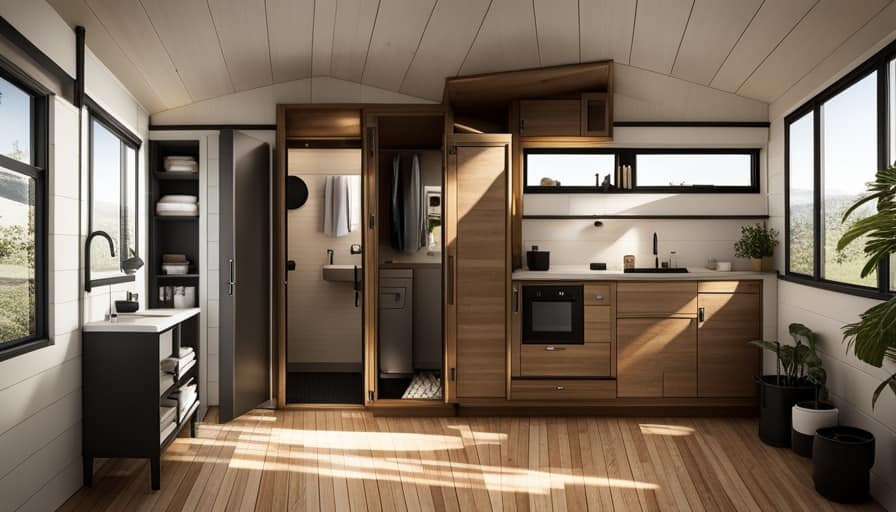
Now, let’s discuss the factors that affect the cost of a tiny house. Size, materials, and customization are the main factors. The larger the size, the more materials and labor will be required, thus increasing the cost. Additionally, using high-quality and sustainable materials can also raise the price. Lastly, customization, such as unique designs or added features, will add to the overall cost.
Exploring Traditional Financing Options
When exploring financing options for a tiny house, it’s important to consider traditional routes such as bank loans or credit unions. These options can provide the necessary funds to purchase or build your dream tiny house. Here are some key points to keep in mind when considering traditional financing options:
-
Traditional bank loans: Many banks offer loans specifically designed for home construction or purchases, which can be used for a tiny house.
-
Personal loans: If you don’t qualify for a traditional bank loan, personal loans from banks or online lenders can be a viable alternative.
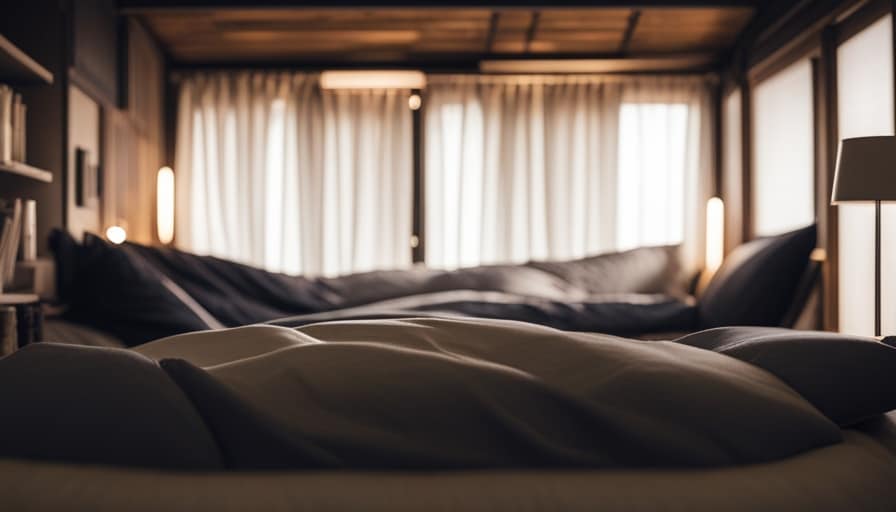
-
Interest rates: Traditional financing options may offer competitive interest rates, depending on your creditworthiness and other factors.
-
Repayment terms: It’s important to carefully review the repayment terms of any loan you consider, including the length of the loan and monthly payment amounts.
-
Eligibility requirements: Different lenders have different eligibility criteria, so it’s important to research and compare options to find the best fit for your needs.
Exploring traditional financing options can provide a solid foundation for financing your tiny house.
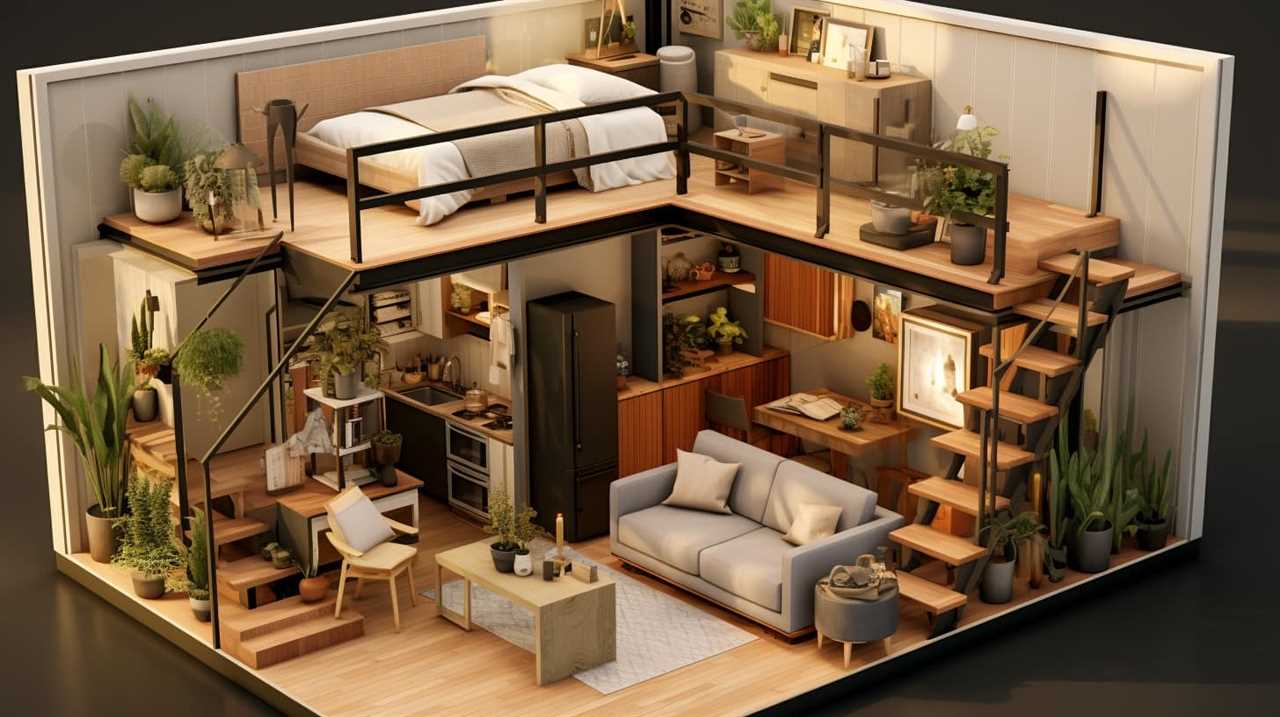
However, there are also alternative financing options worth considering, which will be explored in the next section.
Exploring Alternative Financing Options
One option to consider when exploring alternative financing options for a tiny house is crowdfunding. Crowdfunding is a method of raising funds by pooling small amounts of money from a large number of people. It can be a viable option for financing a tiny house as it allows individuals to contribute towards the project. Another alternative financing option is personal loans. Personal loans are loans that are not secured by any collateral, such as a house or car. They can be used to finance a variety of expenses, including the construction or purchase of a tiny house. When considering personal loans, it is important to shop around for the best interest rates and terms. Below is a table comparing crowdfunding and personal loans as alternative financing options for a tiny house:
| Financing Option | Pros | Cons |
|---|---|---|
| Crowdfunding | – Can raise funds from others | – No guarantee of reaching goal |
| Personal Loans | – Can be used for any purpose | – May require good credit score |
Both crowdfunding and personal loans can provide alternative financing options for a tiny house. It is important to carefully consider the pros and cons of each option before making a decision.
Tips for Saving and Budgeting for a Tiny House
Saving and budgeting for a tiny house involves prioritizing expenses and finding ways to cut costs. Here are some practical tips to help you save and budget effectively:

- Create a detailed budget: Start by listing all your expenses and income to determine how much you can allocate towards your tiny house.
- Cut unnecessary expenses: Identify areas where you can reduce spending, such as eating out less or canceling unused subscriptions.
- Save consistently: Set aside a certain amount of money each month specifically for your tiny house fund.
- Consider a tiny house loan: Research options for obtaining a loan specifically designed for tiny house financing.
- Explore crowdfunding options: Crowdfunding platforms can help you raise funds for your tiny house project by reaching out to a wider network of supporters.
By implementing these tips, you can make steady progress towards your goal of owning a tiny house.
Now, let’s explore some resources for grants and financial assistance to further support your journey.
Resources for Grants and Financial Assistance
I can explore various resources for grants and financial assistance to help me finance my tiny house. Grants are a great option to consider, as they provide funding that doesn’t need to be repaid.
There are several organizations and programs that offer grants specifically for individuals looking to build or purchase a tiny house. One such resource is the Tiny House Fund, which provides grants to low-income individuals and families for the construction of tiny houses.
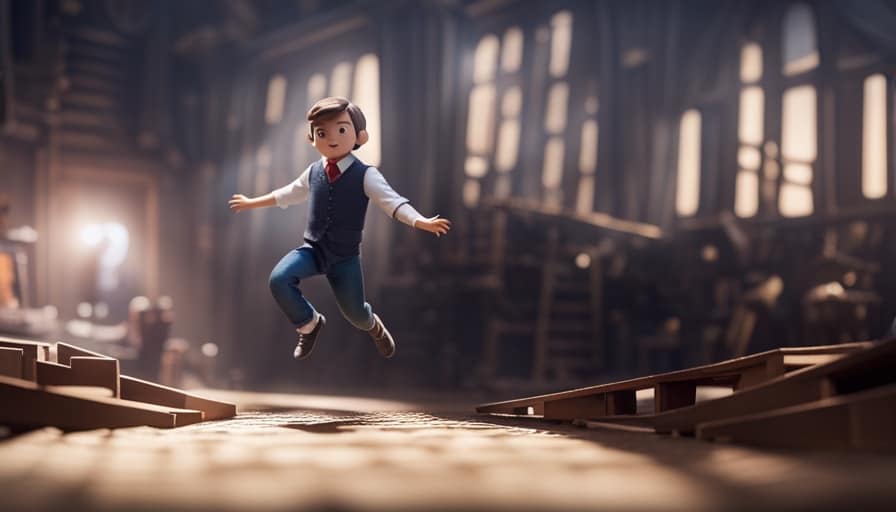
Another option is the Housing Assistance Council, which offers grants to organizations that provide housing assistance to low-income individuals.
It’s important to note that grants availability may vary depending on location and eligibility criteria. Therefore, it’s crucial to research and identify grants that align with your specific needs and circumstances.
Frequently Asked Questions
Can I Use a Personal Loan to Finance a Tiny House?
Yes, you can use a personal loan to finance a tiny house. It’s one of the alternative financing options available. However, make sure to research interest rates and terms to find the best option for you.
Are There Any Specific Qualifications I Need to Meet in Order to Obtain a Traditional Mortgage for a Tiny House?
To obtain a traditional mortgage for a tiny house, you need to meet certain qualifying criteria. The application process requires providing necessary documentation, such as income verification and credit history.
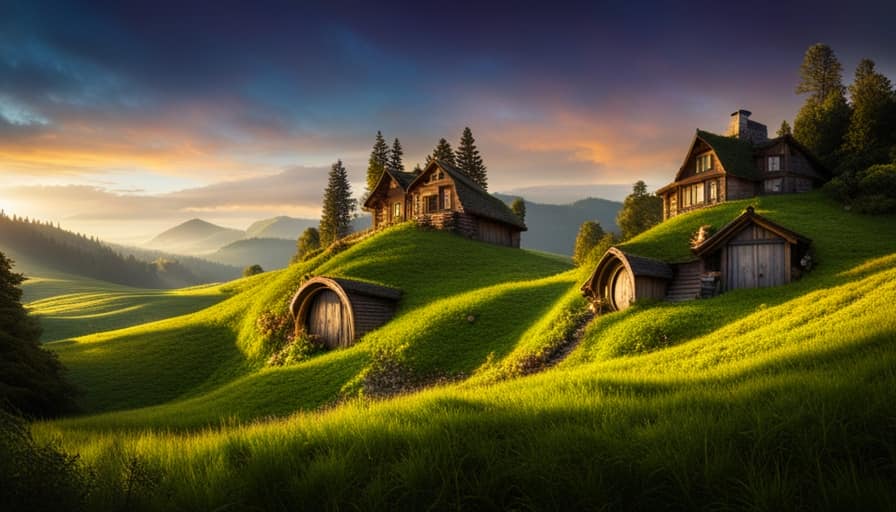
Are There Any Tax Benefits or Incentives Available for Financing a Tiny House?
Tax benefits and incentives can be available when financing a tiny house. It’s important to research and consult with a tax professional to understand the specific benefits that may apply to your situation.
What Are the Advantages and Disadvantages of Using Alternative Financing Options for a Tiny House?
Using alternative financing options for a tiny house has advantages, such as flexibility and lower interest rates, but also disadvantages, like stricter eligibility criteria. It’s important to weigh the pros and cons before deciding.
Are There Any Specific Tips or Strategies for Saving and Budgeting for a Tiny House That Differ From Traditional Homeownership?
When it comes to saving and budgeting for a tiny house, there are some specific tips and strategies that differ from traditional homeownership. Some budgeting strategies include cutting expenses, tracking spending, and setting realistic goals. Additionally, saving techniques like automating savings and finding ways to earn extra income can help you reach your financial goals faster.
Conclusion
In conclusion, financing a tiny house may seem daunting, but with careful planning and research, it can be achievable.

By understanding the costs involved, exploring traditional and alternative financing options, and implementing smart saving and budgeting strategies, you can make your dream of owning a tiny house a reality.
Remember, there are also resources available such as grants and financial assistance programs that can provide additional support.
So don’t let financial barriers hold you back, start exploring your options today and embark on your tiny house journey.
I’m Theodore, and I love tiny houses. In fact, I’m the author of Tiny House 43, a book about tiny houses that are also tree houses. I think they’re magical places where imaginations can run wild and adventures are just waiting to happen.
While tree houses are often associated with childhood, they can be the perfect adult retreat. They offer a cozy space to relax and unwind, surrounded by nature. And since they’re typically built on stilts or raised platforms, they offer stunning views that traditional homes simply can’t match.
If you’re looking for a unique and romantic getaway, a tree house tiny house might just be the perfect option.
Beginners Guides
How Do I Draw a Tiny House
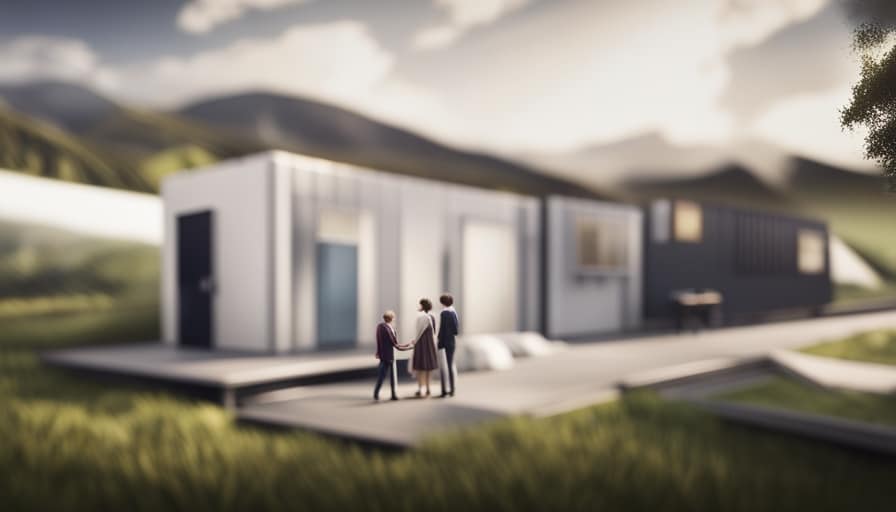
As a future architect, I am constantly captivated by the complexities involved in sketching a small house. It is often said that the beauty lies in the details, and this miniature masterpiece truly exemplifies that sentiment.
In this article, I will guide you through the process of creating a detailed and precise drawing of a tiny house. From understanding the basics of design to adding those finishing touches, you’ll discover how to bring your vision to life on paper.
Let’s dive in and unlock the secrets of drawing a tiny house!
Key Takeaways
- Tiny house design principles prioritize maximizing space in a small footprint and utilizing multi-functional spaces.
- Accurate measurements and choosing the appropriate scale are crucial for a precise and realistic representation.
- Sketching out the layout and floor plan should consider unique storage solutions, placement of windows for natural light, and attention to detail and proportions.
- Adding detail to tiny house elevations can be done by selecting the perfect color palette, incorporating unique architectural elements, and considering light, neutral tones or bold, vibrant colors.
Understanding the Basics of Tiny House Design
As I begin to draw a tiny house, I must first understand the basics of its design. Tiny house design principles are centered around maximizing space in a small footprint. When designing a tiny house, it’s crucial to carefully consider every inch of the layout.

One key principle is to prioritize multi-functional spaces. Each area should serve multiple purposes, such as a living room that can also convert into a bedroom. Storage is another important aspect, with clever solutions like built-in cabinets and hidden compartments. Additionally, utilizing vertical space through lofted areas or tall shelving can help maximize storage and living areas.
Choosing the Right Scale for Your Tiny House Drawing
I should consider the size and dimensions of my tiny house when choosing the right scale for my drawing. Accurate measurements are crucial in creating a precise and realistic representation of my tiny house. By using the correct scale, I can ensure that every element of the design is accurately depicted.
Exploring different design elements for my tiny house scale drawings allows me to experiment with various layouts and configurations. This not only helps me visualize the final result, but also enables me to make informed decisions regarding the placement of furniture, appliances, and other features.
Once I’ve determined the appropriate scale, I can confidently move on to sketching out the layout and floor plan, bringing my tiny house design to life.

Sketching Out the Layout and Floor Plan
Once I’ve chosen the right scale for my tiny house drawing, it’s important to start sketching out the layout and floor plan.
To ensure an efficient use of space, I’ll incorporate unique storage solutions. This can include built-in shelving, hidden compartments, and multi-functional furniture.
Additionally, I’ll carefully consider the placement of windows for optimal natural light. This won’t only enhance the overall ambiance of the tiny house but also reduce the need for artificial lighting during the day.
By strategically positioning windows in areas where sunlight is abundant, I can create a bright and airy atmosphere.

It’s crucial to prioritize both functionality and aesthetics when sketching out the layout and floor plan of a tiny house.
Adding Detail to Your Tiny House Elevations
While adding detail to my tiny house elevations, I’ll focus on incorporating architectural elements that enhance the overall design and character of the house.
One important aspect to consider is selecting the perfect color palette for your tiny house design. The colors you choose can greatly impact the visual appeal and atmosphere of your tiny home. Consider using light, neutral tones to create a spacious and airy feel, or bold and vibrant colors to add a pop of personality.
In addition to color, incorporating unique architectural elements into your tiny house elevation can make it stand out. Whether it’s a charming bay window, a decorative trim, or an interesting roofline, these elements can add visual interest and character to your tiny home.

By carefully selecting colors and incorporating unique architectural elements, you can create a tiny house elevation that’s both visually appealing and reflective of your personal style.
Now, let’s move on to finalizing your tiny house drawing with finishing touches.
Finalizing Your Tiny House Drawing With Finishing Touches
Adding decorative details and selecting the right materials are key steps in finalizing your tiny house drawing with finishing touches. To ensure your tiny house design truly stands out, consider the following:
-
Selecting the perfect color palette: Choose colors that reflect your personal style and create an inviting atmosphere. Consider using light and neutral tones to make the space feel larger, or vibrant shades to add a pop of energy.
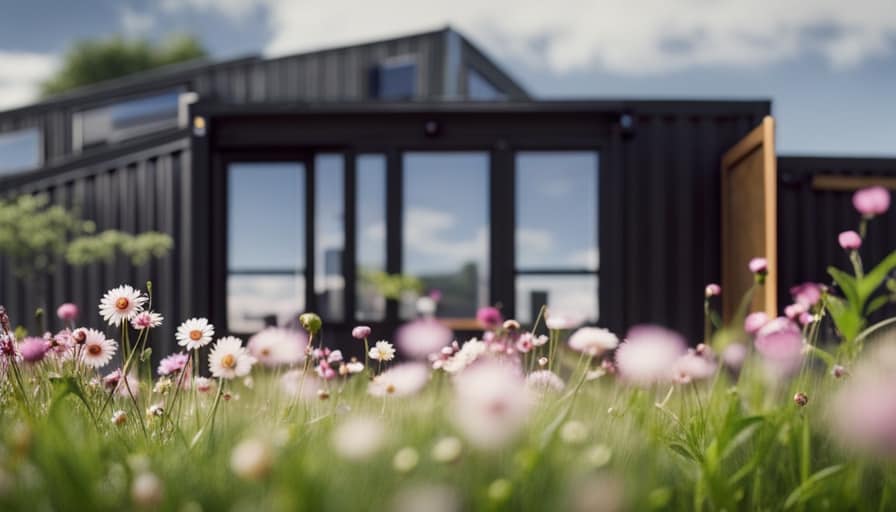
-
Incorporating sustainable and eco-friendly elements: Make your tiny house environmentally friendly by incorporating features such as solar panels, rainwater harvesting systems, and energy-efficient appliances. Use recycled or reclaimed materials whenever possible to reduce waste and minimize your environmental footprint.
-
Adding unique architectural details: Consider incorporating unique architectural elements like exposed beams, arched windows, or a charming front porch to give your tiny house character and charm.
-
Enhancing with landscaping: Don’t forget about the exterior! Enhance your tiny house design with landscaping elements such as flower beds, shrubs, or a small vegetable garden. This will add curb appeal and create a welcoming outdoor space.
Frequently Asked Questions
What Are Some Common Challenges or Obstacles to Consider When Designing a Tiny House?
When designing a tiny house, it is important to consider common challenges and obstacles such as space optimization and design challenges. These factors require precise planning and attention to detail to ensure optimal functionality and livability.
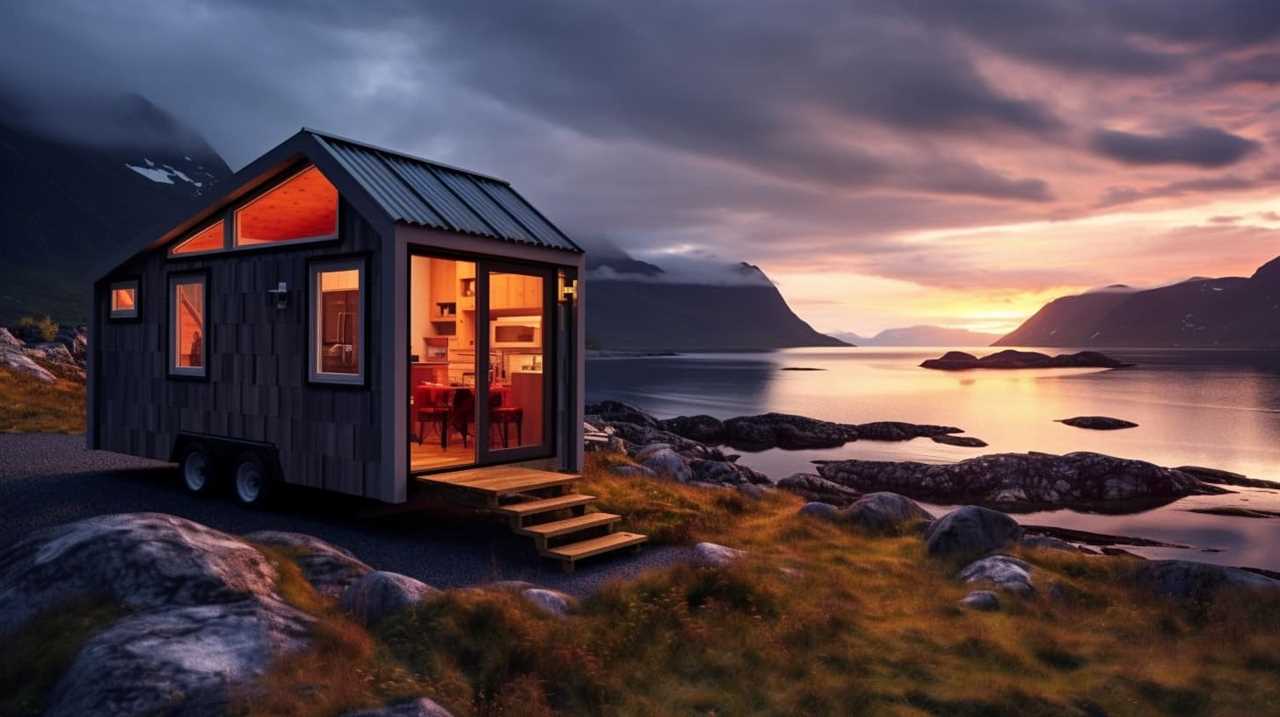
Can I Use Software or Online Tools to Create My Tiny House Drawing?
Yes, you can use software or online tools to create your tiny house drawing. It is best to follow these practices for creating detailed designs: utilize accurate measurements, incorporate necessary features, and ensure proper scaling for a realistic representation.
Are There Any Specific Building Codes or Regulations That I Should Be Aware of When Designing a Tiny House?
When designing a tiny house, it is important to be aware of building code requirements and zoning restrictions. These regulations ensure the safety and legality of your structure, so it’s crucial to familiarize yourself with them before starting your design process.
How Do I Incorporate Sustainable and Eco-Friendly Features Into My Tiny House Design?
To incorporate sustainable and eco-friendly features into my tiny house design, I can use eco-friendly materials like reclaimed wood and recycled insulation. Additionally, I can install energy-efficient systems such as solar panels and a rainwater harvesting system.
Are There Any Recommended Resources or Communities for Further Inspiration and Support in Designing a Tiny House?
There are recommended resources and communities for inspiration and support in tiny house design. Check out tiny house design competitions and online forums for enthusiasts. They provide valuable insights and connections for your project.

Conclusion
In conclusion, drawing a tiny house requires understanding the basics of design, choosing the right scale, and sketching out the layout and floor plan.
By adding detail to the elevations and finalizing the drawing with finishing touches, you can create a precise and detailed representation of your dream tiny home.
Just like a skilled architect carefully crafts a blueprint, your tiny house drawing will serve as the foundation for turning your vision into reality.
I’m Theodore, and I love tiny houses. In fact, I’m the author of Tiny House 43, a book about tiny houses that are also tree houses. I think they’re magical places where imaginations can run wild and adventures are just waiting to happen.
While tree houses are often associated with childhood, they can be the perfect adult retreat. They offer a cozy space to relax and unwind, surrounded by nature. And since they’re typically built on stilts or raised platforms, they offer stunning views that traditional homes simply can’t match.
If you’re looking for a unique and romantic getaway, a tree house tiny house might just be the perfect option.
Beginners Guides
How Do I Find a Tiny House for Sale for Adults

I’m always searching for the ideal tiny home. It feels like finding a needle in a haystack, but with the right approach, it can be done.
In this article, I’ll guide you through the process of finding a tiny house for sale that’s perfect for adults. From exploring online listings to connecting with builders and attending workshops, you’ll discover all the tips and tricks to make your dream of owning a tiny house a reality.
Let’s get started!
Key Takeaways
- The internet offers a wide range of options for finding tiny houses for sale, with online listings providing information on financing options and customization choices.
- Connecting with builders and companies can provide valuable information on purchasing and customizing a tiny house, as well as guidance on building regulations and permits.
- Utilizing social media and online communities can help tap into a network of like-minded individuals, gain recommendations, and access valuable insights and resources from the tiny house community.
- Attending workshops and events can provide education on financing options, networking opportunities, and exposure to the latest trends and designs in the tiny house community.
Exploring Online Listings and Websites
I can start my search for a tiny house by browsing through online listings and websites. The internet offers a vast array of options when it comes to finding a tiny house for sale. Not only can I explore different listings, but I can also learn more about the financing options available for tiny homes.

Many websites provide information on loans, grants, and other financial resources that can help make owning a tiny house a reality. Additionally, these online platforms showcase a variety of tiny house designs and customization options, allowing me to find a home that suits my preferences and needs.
Connecting With Tiny House Builders and Companies
By reaching out to tiny house builders and companies, I can explore my options and gather more information about the process of purchasing and customizing a tiny house. These professionals have extensive knowledge and expertise in building tiny houses and can guide me through the entire process.
When connecting with them, it’s important to inquire about building regulations to ensure that my tiny house meets all the necessary requirements. They can provide valuable insights and advice on navigating through the complexities of local zoning laws and permits.
Additionally, they can also offer information on financing options, such as loans or payment plans, to help make owning a tiny house more accessible.
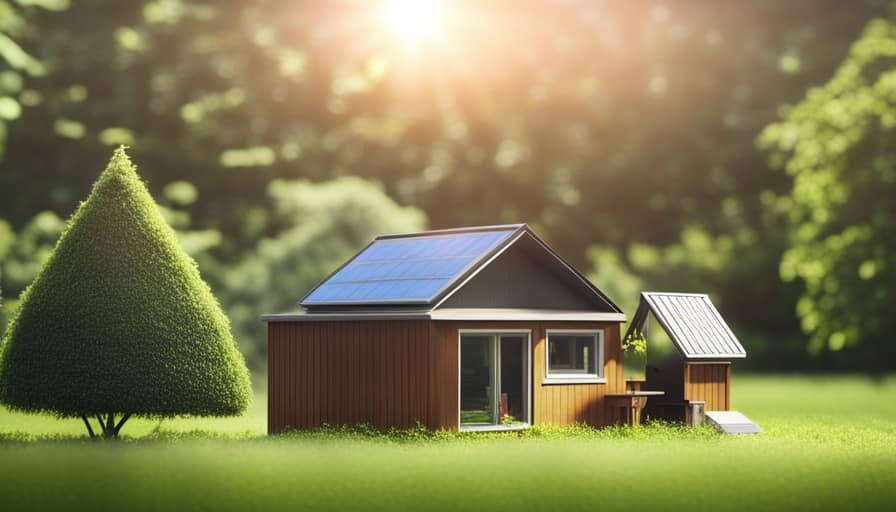
Utilizing Social Media and Online Communities
One can utilize social media and online communities to connect with fellow tiny house enthusiasts and discover potential listings for tiny houses for sale. Joining local groups on platforms like Facebook or Reddit can provide a wealth of information and resources. These groups often have members who are actively involved in the tiny house community and can offer valuable insights and recommendations. Engaging with these communities allows you to tap into a network of individuals who share your passion for tiny living and can guide you towards finding the perfect tiny house for sale.
Don’t hesitate to ask for recommendations within these groups, as members are usually more than willing to share their experiences and knowledge. By leveraging the power of social media and online communities, you can greatly increase your chances of finding the ideal tiny house for sale.
Now that we’ve explored the benefits of utilizing social media and online communities, let’s delve into the next step of the process – attending tiny house workshops and events.
Attending Tiny House Workshops and Events
To expand your knowledge and network in the world of tiny houses, consider attending workshops and events that focus on this unique lifestyle. These gatherings provide valuable opportunities to learn from experts, connect with like-minded individuals, and gain insight into the latest trends and innovations in the tiny house community. Here are three reasons why attending these workshops and events is beneficial:
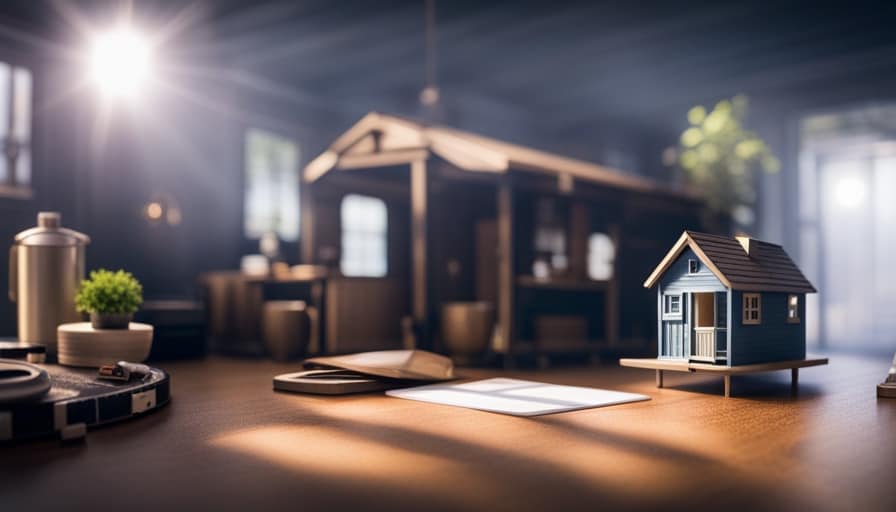
-
Education: Workshops and events offer a wealth of information on various topics, including tiny house financing options. You can learn about different financing methods, such as loans, grants, and crowdfunding, to help make your tiny house dream a reality.
-
Networking: Meeting fellow enthusiasts and professionals in the industry is a great way to expand your network. You can exchange ideas, share experiences, and potentially find partners or mentors who can guide you through the process of building a tiny house on a foundation.
-
Inspiration: By attending workshops and events, you’ll be exposed to a wide range of tiny house designs and styles. This exposure can inspire you to think creatively and find innovative solutions for your own tiny house project.
Considering Alternative Options for Tiny House Living
I’ve explored various tiny house options, but my favorite alternative is living in a converted shipping container. Not only are shipping containers affordable and readily available, but they also provide a unique and eco-friendly living space.

One of the best aspects of living in a converted shipping container is the opportunity to join tiny house communities. These communities are designed to foster a sense of connection and support among residents, creating a tight-knit community where everyone looks out for each other.
Additionally, renting options for converted shipping containers are becoming more popular, allowing individuals to experience the benefits of tiny house living without the commitment of purchasing a property. This flexibility is perfect for those who want to try out the lifestyle before fully committing.
Frequently Asked Questions
Are There Any Specific Regulations or Zoning Requirements for Placing a Tiny House on a Property?
Regulations and zoning requirements vary depending on the location. Before placing a tiny house on a property, it is important to research and comply with local laws. Consulting with a real estate professional can provide guidance in navigating these regulations.
What Are Some Common Challenges or Considerations When It Comes to Financing a Tiny House?
When it comes to financing a tiny house, there are several challenges to consider. Affordability is a major concern, as well as finding lenders who understand the unique nature of tiny homes.
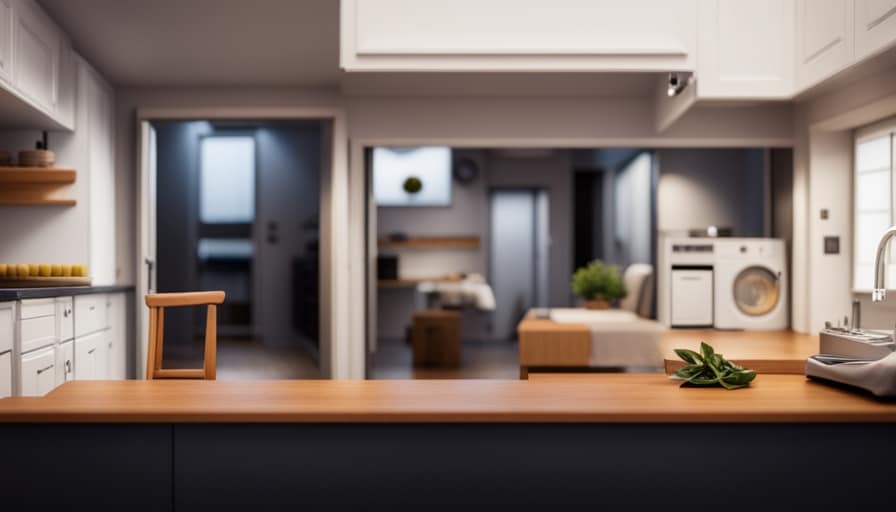
Can I Customize or Personalize a Pre-Built Tiny House From a Builder?
Yes, you can customize or personalize a pre-built tiny house from a builder. It allows you to tailor the design and features to your preferences, making it a unique and personalized space.
Are There Any Specific Insurance Considerations for Owning a Tiny House?
Insurance coverage for tiny houses requires considering their unique features and potential risks. It’s important to research insurance providers who specialize in tiny house coverage to ensure you have the right protection for your investment.
How Do I Navigate the Process of Finding Land or a Community to Park My Tiny House In?
Finding land or a community to park my tiny house in can be challenging. Research online platforms, local real estate agents, and tiny house communities. Visit potential locations, ask questions, and consider factors like zoning regulations and amenities.
Conclusion
In conclusion, there are several ways to make finding a tiny house for sale for adults easier. These include exploring online listings and websites, connecting with builders and companies, utilizing social media and online communities, and attending workshops and events.
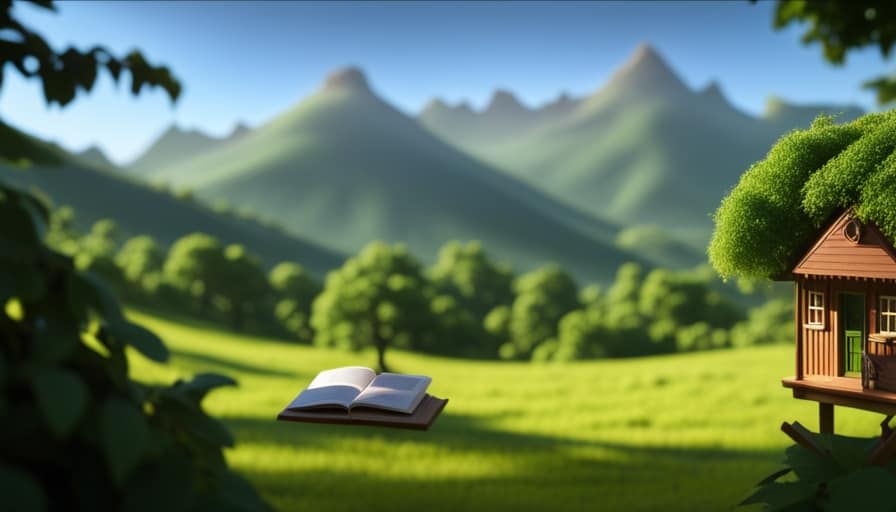
One effective method is to search for tiny houses for sale through online listings and websites. There are dedicated platforms that specialize in listing tiny houses, making it convenient to browse through various options and compare prices and features.
Another option is to connect directly with builders and companies that specialize in constructing and selling tiny houses. Many builders have websites where they showcase their designs and provide information on how to purchase or customize a tiny house according to specific needs and preferences.
Utilizing social media and online communities can also be helpful in finding a tiny house for sale. There are groups and pages dedicated to tiny house living where individuals can connect with others who are selling or buying tiny houses. These platforms provide a space for sharing information, asking questions, and even finding potential sellers or buyers.
Attending workshops and events related to tiny house living is another valuable way to find a tiny house for sale. These events often feature displays of different tiny house designs and provide an opportunity to meet builders, sellers, and other individuals who are passionate about tiny house living.

It’s interesting to note that the popularity of tiny house living is on the rise. According to a survey conducted by Tiny House Community, the number of adults opting for tiny house living has increased by 67% in the past five years. This statistic highlights the growing appeal and interest in this alternative lifestyle.
Overall, by utilizing online resources, connecting with builders and companies, engaging with social media and online communities, and attending workshops and events, adults can make the search for a tiny house for sale much easier.
I’m Theodore, and I love tiny houses. In fact, I’m the author of Tiny House 43, a book about tiny houses that are also tree houses. I think they’re magical places where imaginations can run wild and adventures are just waiting to happen.
While tree houses are often associated with childhood, they can be the perfect adult retreat. They offer a cozy space to relax and unwind, surrounded by nature. And since they’re typically built on stilts or raised platforms, they offer stunning views that traditional homes simply can’t match.
If you’re looking for a unique and romantic getaway, a tree house tiny house might just be the perfect option.
-

 Beginners Guides1 week ago
Beginners Guides1 week agoHow To Buy A Tesla Tiny House
-

 Energy Efficiency1 month ago
Energy Efficiency1 month agoBest Tiny Homes For Cold Climates
-

 Beginners Guides5 days ago
Beginners Guides5 days agoTiny House Nation Where Are They Now Stephanie
-

 Tiny House Resources (e.g., legalities, cost, insurance, FAQs)2 months ago
Tiny House Resources (e.g., legalities, cost, insurance, FAQs)2 months agoDo Tiny Homes Need Planning Permission?
-

 Beginners Guides2 weeks ago
Beginners Guides2 weeks agoFrom The Show Tiny House Nation How Many Keep Their Tiny House?
-

 Beginners Guides2 months ago
Beginners Guides2 months agoUsing a Climbing Net For Treehouse Construction
-

 Beginners Guides2 months ago
Beginners Guides2 months agoHow to Build a Treehouse Without Drilling Into the Tree
-

 Beginners Guides3 weeks ago
Beginners Guides3 weeks agoTiny House Nation Who Pays For The Houses







